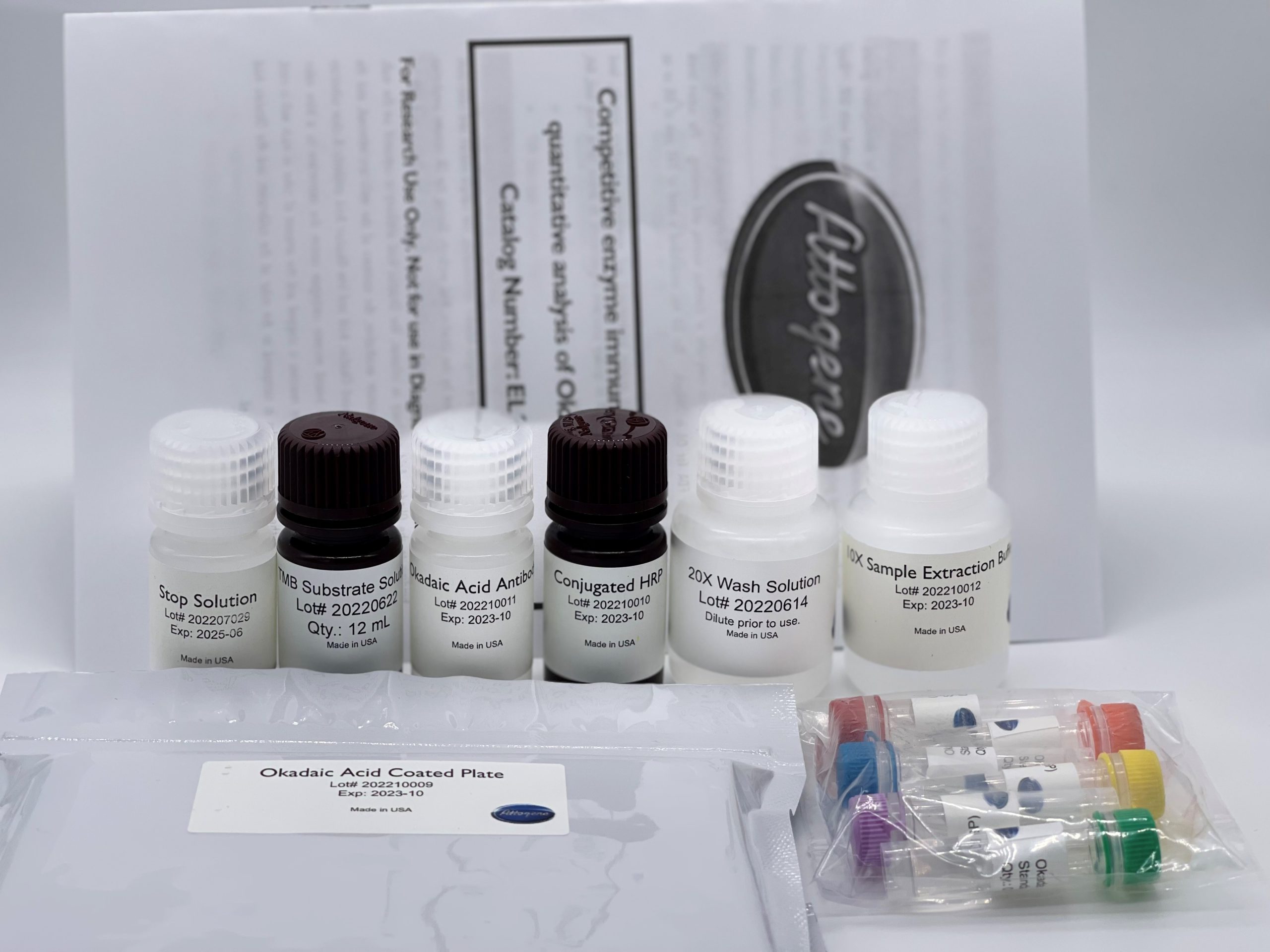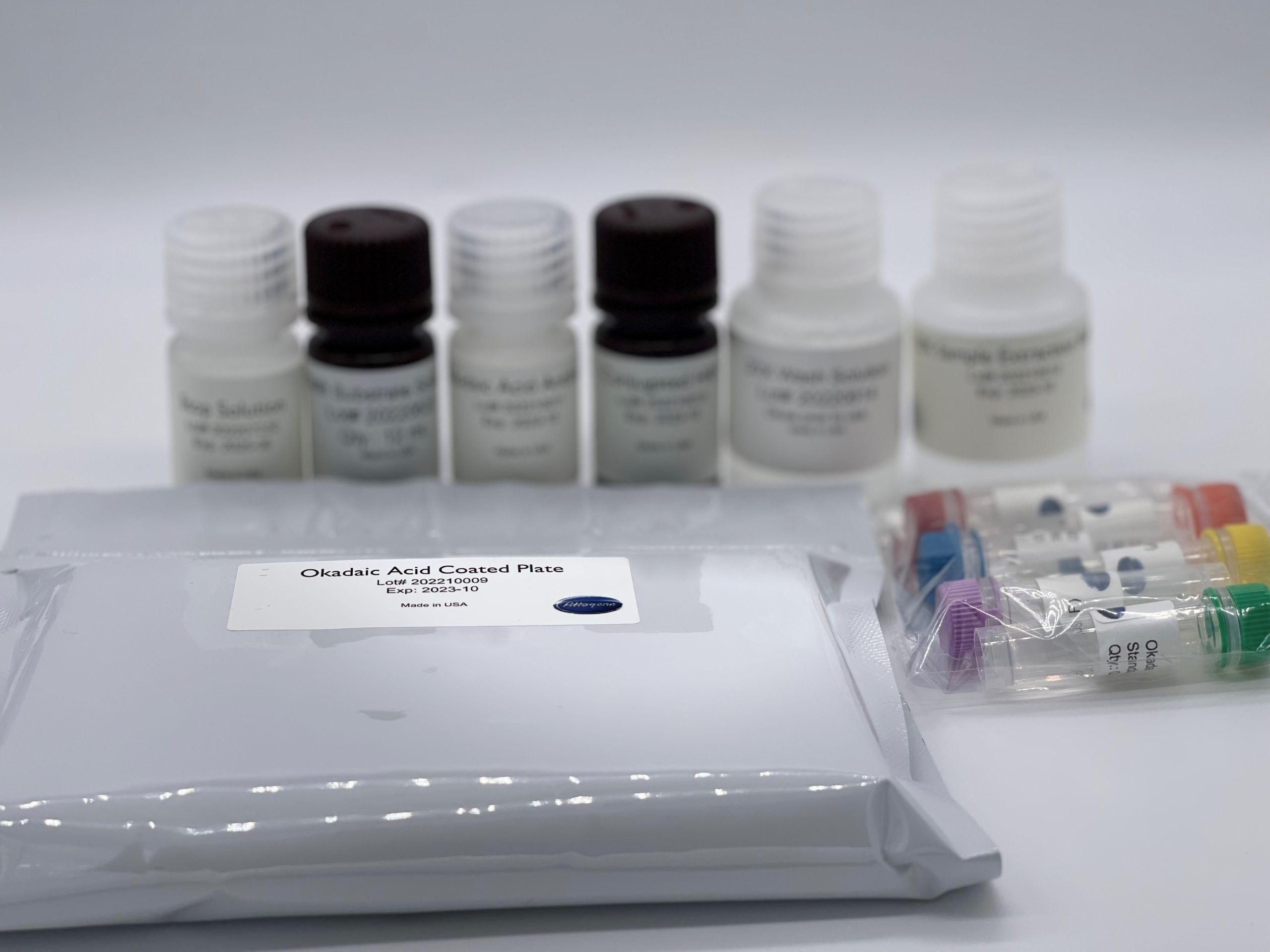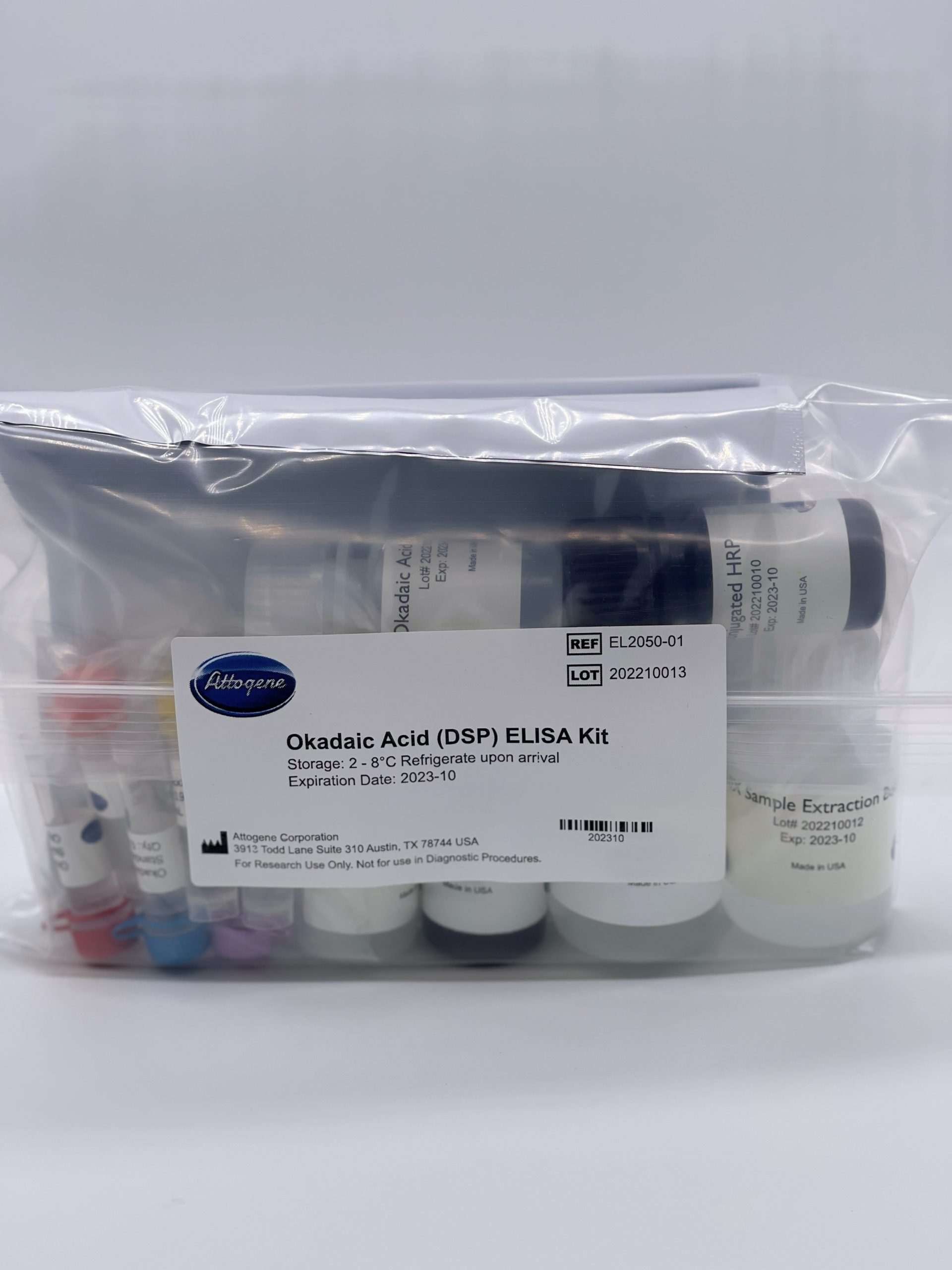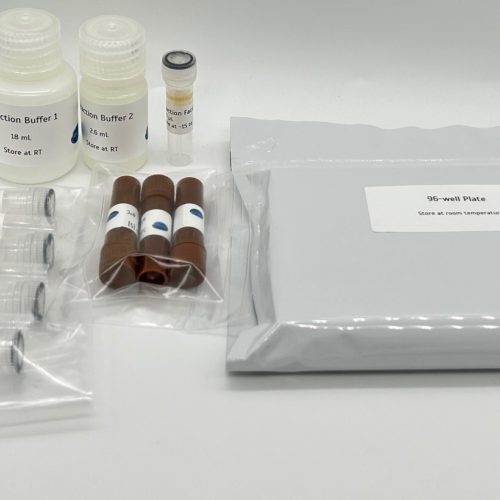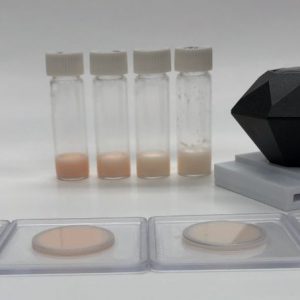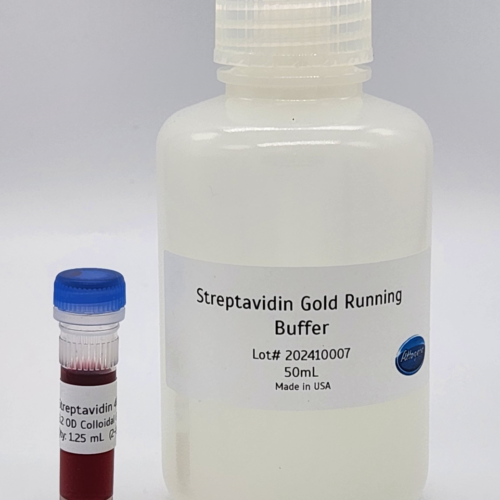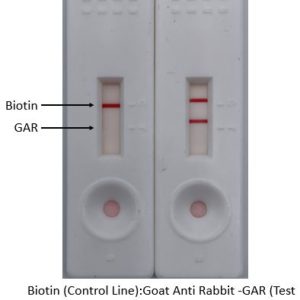Okadaic Acid (DSP) ELISA Kit
$425.00
In Stock & Ready to Ship
- Competitive ELISA for the quantitative analysis of Okadaic Acid (DSP)
- Format: 96-well microtiter plate (12 test strips of 8 wells)
- Okadaic acid is a potent neurotoxin and phosphatase inhibitor from dinoflagellate black sponges that are associated with seafood poisonings.
Okadaic Acid (OA) is a one of the diarrhetic shellfish poisons (DSP) produced by dinoflagellate genera Dinophysis and Prorocentrum. There are several chemically different toxins associated with DSP.
They are lipophilic and polyether compounds and can be divided into three main groups:
- Acidic toxins
- Neutral toxins
- Other toxins 2 Contamination of shellfish with OA has been associated with harmful algae blooms throughout the world.
In humans, DSP causes dose-dependent symptoms of diarrhea, nausea, and vomiting. The action levels established by the FDA for OA is 200ppb. The EU has established a level of 160 ppb of OA or its equivalent.
The Attogene Okadaic acid ELISA kit enables international and government regulatory agencies, food manufacturers and processors, as well as quality assurance organizations to detect OA in food, fish, and environmental samples of concern.
Okadaic acid is the causative agent of Diarrhetic Shellfish Poisoning (DSP).
FDA and EPA Safety Levels in Regulations and Guidance – 0.16 mg/kg for Clams, mussels, oysters, and whole and roe-on scallops, fresh, frozen, or canned. – National Shellfish Sanitation Program Guide for the Control of Molluscan Shellfish.
Inquire for offering: sales@attogene.com
